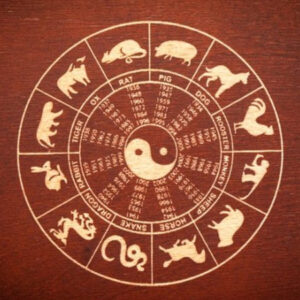
Why did people wear powdered wigs? Today, wigs are a fun way to change your appearance without altering your real hair, or they work to cover balding skin that comes with disease or age. Throughout history, however, wigs have had a greater role in society than they do today.
Ancient Egyptians used to shave their heads to stay cool and wore wigs to protect the skin from the harsh sunlight. Oftentimes, a wig helped to correct or hide genetic deformities. Powdered wigs had the same purpose, but they later became symbols of status and power.
Why Did People Wear Powdered Wigs?

Image source: Pinterest
Having a full head of hair was important for any person of status back in the 16th and 17th centuries. Bald spots were seen as shameful, so wigs became an essential item for fashion and social standing. It also became necessary when an epidemic of syphilis and a lack of advanced medicine caused both men and women to develop bald spots.
Many cite King Louis XIII of France as the forefather of fashionable wig-wearing when he started balding prematurely in 1624. To hide the balding, he wore powdered wigs, which caught on among his subjects. His son Louis XIV of France then continued to promote the use of wigs well into the 17th century. Powdered wigs became an icon of the wealthy and important as only those who had extra money to spend could afford one.
Wigs had to be cleaned regularly because they were usually infested with lice. After cleaning, the wigs were refreshed with powder made from poor-quality flour. This is why many paintings of famous or powerful men showed them wearing white or off-white wigs.
The actual powdering of the wigs was inconvenient and often made a mess. As soon as naturally white horse hair wigs were developed, powdered wigs quickly fell out of style. Even when the formula for the powder grew more sophisticated and scented with appealing smells like lavender, powdered wigs didn’t catch back on.
By the end of the 18th century, wig-wearing and the powder used for wigs and hair were as good as gone thanks to a tax imposed by the British government on the hair powder. Since wigs were associated with aristocrats and the ruling class, the trend continued to be abandoned into the 19th and 20th centuries. The primary exception was people in formal court dress.
People who continued to wear powdered and powderless wigs even after they became unfashionable held certain jobs. Lawyers and coachmen were two prominent examples. It was theorized that the wigs provided a sense of anonymity and power.
In modern times, wigs are still worn in courts in England to show respect for the law and as a ceremonial part of the courtroom. Besides this tradition, powdered wigs aren’t seen anywhere else as a standard practice anymore.








